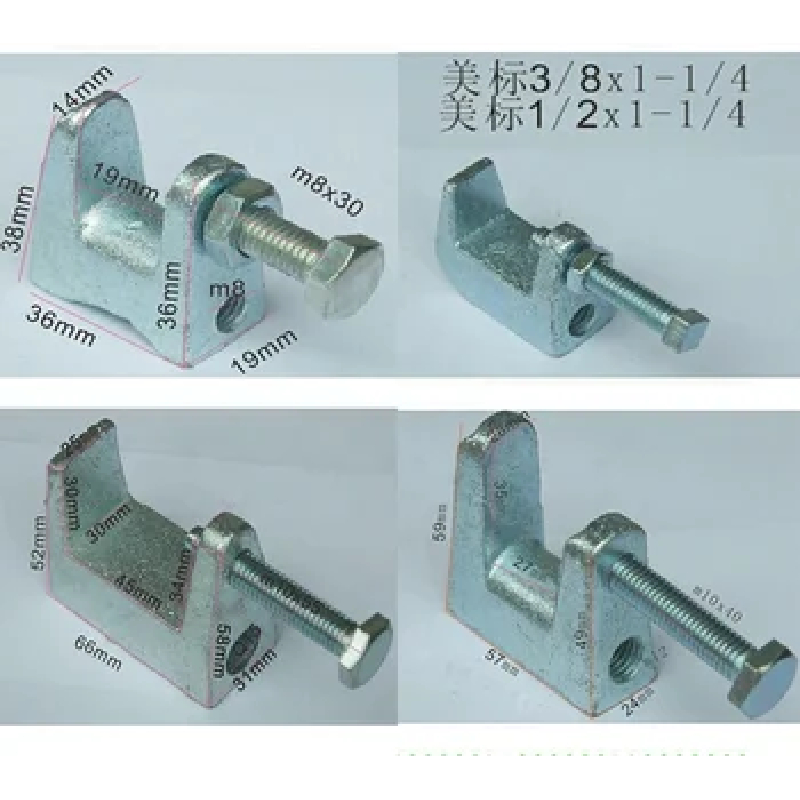अगस्त . 14, 2024 07:56 Back to list
Exploring the Applications and Benefits of Timber Anchor Bolts in Construction Projects
Timber Anchor Bolts Essential Components for Structural Integrity
When it comes to construction, especially in timber structures, ensuring stability and strength is paramount. One of the often underappreciated components that contribute significantly to this stability is the timber anchor bolt. These specialized fasteners serve as critical links between timber components and foundations or other structural elements, playing an essential role in the overall integrity of a building.
What are Timber Anchor Bolts?
Timber anchor bolts are heavy-duty bolts designed to secure timber structures to their foundations. They are typically embedded in concrete or masonry and are used to connect timber beams, columns, and other structural components. The primary function of these bolts is to resist various forces that can act on a building, such as wind shear, seismic activity, and vertical loads.
Types of Timber Anchor Bolts
There are various types of timber anchor bolts, each designed for specific applications. The most common types include
1. Lag Bolts These are large, heavy-duty bolts that feature a coarse thread for a secure grip in timber. Lag bolts can be used in various applications, providing substantial holding power.
2. Expandable Bolts These bolts expand when tightened, creating a secure connection in concrete or masonry. They are often used in situations where the anchor needs to provide additional grip and load-bearing capacity.
3. J-Bolts Shaped like the letter “J,” these bolts are embedded into the foundation, with the long end protruding for connections to timber structures. They provide a strong anchor point for various types of timber framing.
timber anchor bolts

4. U-Bolts Shaped like a “U,” these bolts are used to attach objects to round or tubular structures. They can also be adapted for timber connections in certain scenarios.
Importance of Proper Installation
Proper installation of timber anchor bolts is crucial for maintaining structural integrity. The positioning, depth, and angle of the bolts must be carefully considered based on building codes and engineering specifications. Failure to adhere to these guidelines can result in inadequate holding strength, potentially leading to structural failure.
In addition to ensuring appropriate installation, the selection of materials for the anchor bolts is critical. Stainless steel and galvanized steel are commonly used materials, providing resistance to corrosion and enhancing the longevity of the structure. Non-corrosive materials are especially important in areas prone to moisture, as rust and deterioration can significantly weaken the anchoring system.
Applications in Construction
Timber anchor bolts are widely used in a variety of construction applications. They are essential in framing for homes, commercial buildings, and agricultural structures. In timber-frame construction, for instance, anchor bolts are vital in connecting the timber frame to the concrete slab, ensuring that the building can withstand various environmental stresses.
Additionally, in the context of timber bridges or large outdoor structures, anchor bolts help secure the components firmly to the ground, preventing shifting or collapse under heavy loads or adverse weather conditions.
Conclusion
In conclusion, timber anchor bolts are indispensable components in the world of construction, particularly within timber structures. Their ability to connect and stabilize timber elements against various forces ensures the longevity and safety of buildings. As construction practices continue to evolve, the role of anchor bolts will remain crucial in achieving structural integrity and resilience. Understanding their function and proper installation is essential for engineers, builders, and architects, highlighting the importance of meticulous planning and execution in construction projects.
-
The Ubiquitous Reach of DIN934 in Application Realms
NewsMay.16,2025
-
Exploring Different Bolt Types
NewsMay.16,2025
-
Cracking the Code of Sleeve Anchor Mastery
NewsMay.16,2025
-
Clamp Design Principles,Types and Innovations
NewsMay.16,2025
-
Artistry Inspired by the Humble Anchor Bolt
NewsMay.16,2025
-
A Deep Dive into Screw Types
NewsMay.16,2025


